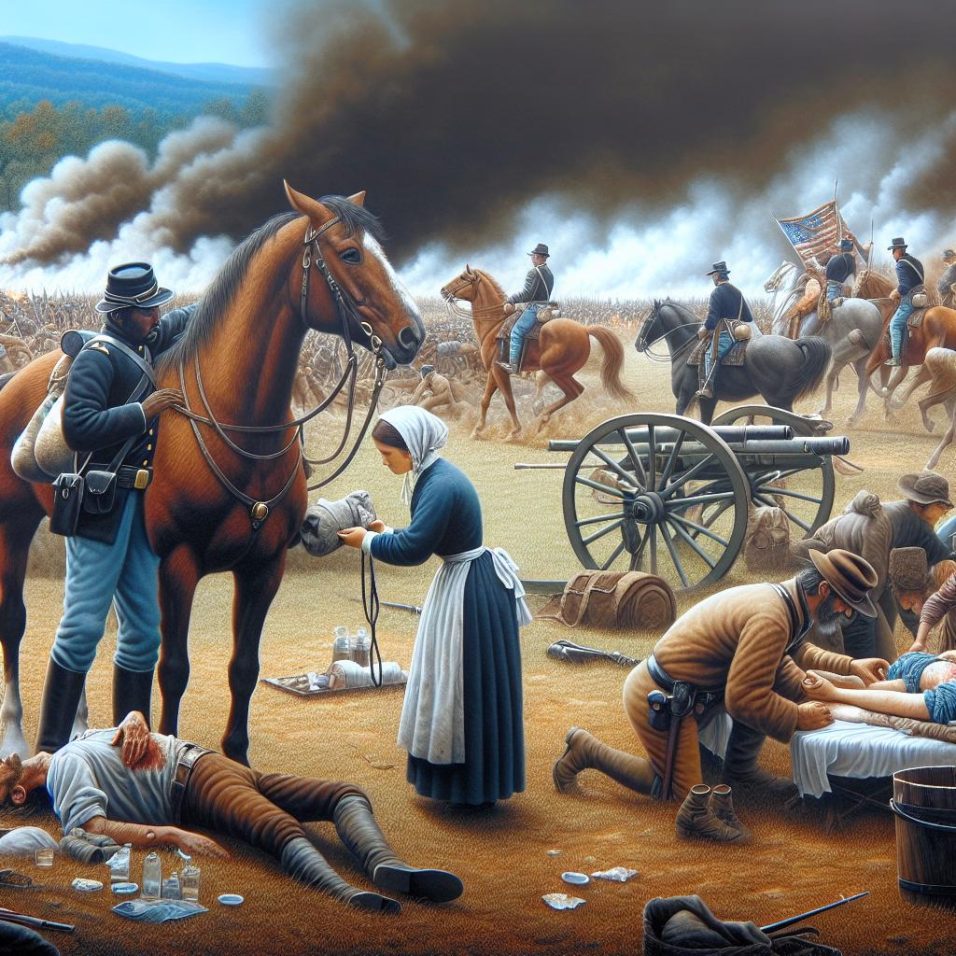The Importance of Horses in Virginia’s Civil War
Virginia, as a key battleground in the American Civil War, was pivotal due to its strategic importance and geographical location. Within the dynamics of war, the role of horses was undeniably crucial, fulfilling roles that extended far beyond the mundane. The presence and utility of horses were fundamental for both the Union and Confederate forces, influencing logistical operations, communication, reconnaissance, and direct combat. This article will delve deeper into these roles and examine the broader implications on Virginia’s equine industry, as well as the socio-economic repercussions of the war on local communities.
Logistical Support and Mobility
Horses were at the heart of logistical operations during the Civil War, acting as the engines for mobility across a war-torn and fragmented landscape. With existing limits on technology and infrastructure, horses enabled armies to maintain supply lines crucial for sustenance and endurance. The landlocked supply routes depended heavily on equine power, with horses pulling wagons laden with food, ammunition, and medical supplies, ensuring that the fighting forces remained operational. Virginia, with its varied terrain of mountains, valleys, and rivers, posed unique challenges that were adeptly navigated with the assistance of these animals.
In addition to manual labor, horses facilitated the movement of heavy artillery, an essential aspect of warfare. By moving cannons and other weaponry, horses allowed forces to respond and adapt to combat situations as they unfolded. The flexibility provided by horses made it possible to deploy artillery strategically, thereby lending a tactical advantage to the forces that could swiftly move their firepower during engagements.
Communication and Reconnaissance
The swiftness and agility of horses were instrumental in communication and reconnaissance missions. Cavalry units, riding high-speed steeds, performed pivotal duties in espionage and intelligence gathering. These units operated as scouts, tasked with probing enemy lines and mapping out territories, which were actions that furnished generals with the strategic information needed to make informed decisions.
Virginia’s diverse countryside, filled with wooded areas and open fields, required precise and timely intelligence. Horses proved indispensable in this regard, as their speed allowed cavalrymen to cover vast areas quickly. Furthermore, these units carried vital correspondence between commanders, as the temporary nature of military engagements necessitated a responsive communication network that the horse-based couriers provided effectively.
In Battle: Cavalry Engagements
The presence of horses extended into the realm of battle itself. Cavalry units, Armored with sabers and rifles, executed maneuvers that exploited the mobility afforded by their mounts. These units were especially effective in executing flanking strategies, launching surprise attacks, and retreating swiftly when needed. The agility of mounted troops allowed them to see and exploit openings in enemy lines, which was crucial in several skirmishes across Virginia.
Noteworthy is that cavalry engagements played a decisive role in numerous battles, altering the control of advantageous positions. Such battles demonstrated the strategic potential of mobile warfare facilitated by horses, showcasing how vital speed and surprise elements were in Civil War battles, particularly in the uniquely rugged terrain of Virginia.
The Impact on Virginia’s Equine Industry
The extensive use of horses during the Civil War had a profound and lasting impact on Virginia’s equine industry. Due to high demand, both Confederate and Union forces were compelled to requisition and, at times, outright confiscate horses from local populations. This not only led to a depletion of horse stocks but also imposed a significant burden on communities whose livelihoods were intertwined with these animals.
Agriculture, a backbone of Virginia’s economy, suffered greatly as farmers struggled without the horses needed for plowing and transportation. Beyond the logistical depletion, the war efforts drained financial resources and labor, leaving a legacy of hardship for post-war recovery. For many Virginians, the absence of horses translated into reduced agricultural output and intensified economic pressures.
The broader repercussions of such high demands on the equine population also created challenges in breeding and maintaining sufficient numbers post-war. As the war drew to a close, the need to rebuild and repurpose the equine industry became evident, marking a transition period that would require significant time and effort to return to pre-war levels of productivity.
Conclusion
The role of horses in Virginia during the Civil War underscores their critical contributions beyond mere creatures of labor. They were integral actors in the military operations, shaping the way battles were fought and, in some cases, determining their outcomes. From logistical support to direct cavalry combat, horses embodied a silent partner to the human forces that steered the course of the war.
Additionally, the war’s effects on the equine industry illustrate the intersections of military needs with civilian life, underscoring how war can ripple through economies and societies long after the last shot is fired. Thus, horses were not only tools of the time but also emblems of resilience and adaptation in the face of adversity. Their impact was both immediate in terms of the war and enduring in the fabric of Virginia’s post-war recovery and reconstruction efforts.
For a deeper exploration into the role of horses in Virginia and during the Civil War, extensive resources including historical articles and archival materials are available on platforms like the Essential Civil War website. These resources provide valuable insights into the war’s nuanced history and the prominent roles that different participants, human and animal alike, played in this defining chapter of American history.


